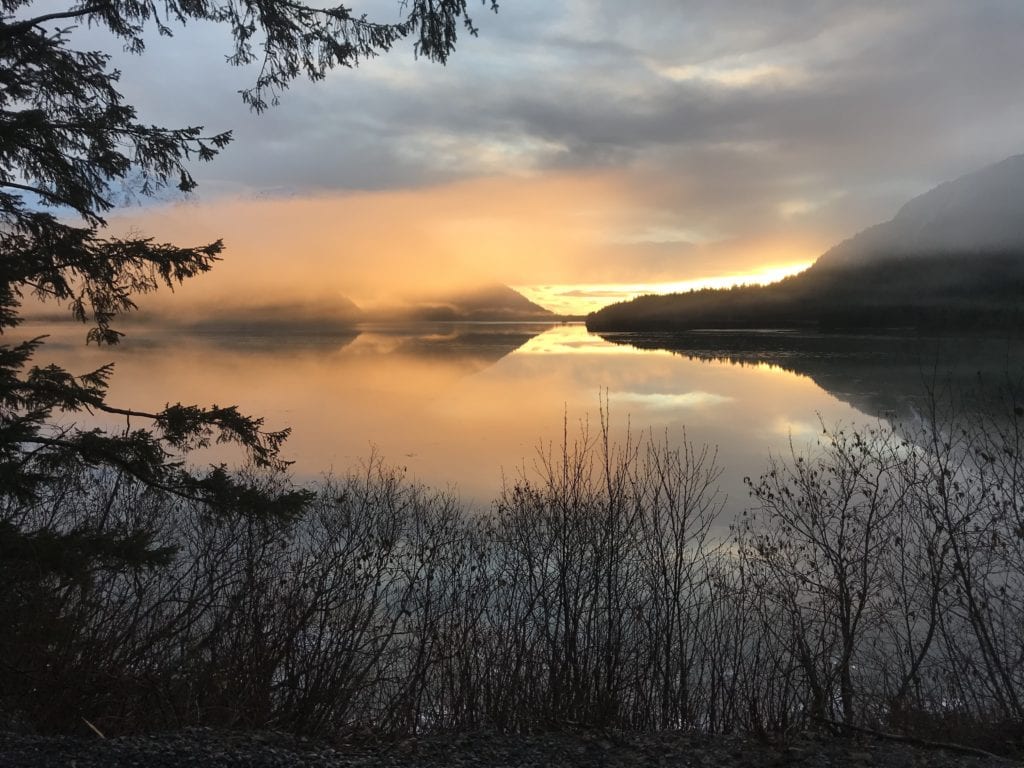
One of my all-time favorite songs is “Here Comes the Sun” by the Beatles.
In simple lines, England’s finest sing about a long cold lonely winter, and the feeling it has been years since the sun has been here, followed by smiles returning to faces, when it finally does reappear.
Anyone living in Alaska’s northern latitudes can relate to that.
The poignant chorus:
“Here comes the sun, do, dun, do, do
Here comes the sun, and I say
It’s all right”
Really says it all.
On Nov. 19, KTVA Channel 2 meteorologist Tracy Sinclare mentioned in the six-o’clock news report that the sun was truly going down for folks living in Utqiagvik (formerly Barrow), Alaska.
In fact, they would no longer see it for over two months.
Talk about there goes the sun.
Ironically, that was the last day the sun would shine through the windows in our home on Odiak Slough, as it’s declining arc will be blocked by the Heney Range for quite some time.
At least we can drive up town or head to the Ski Hill to escape the shadows of the mountains; or head beyond Mile 7 on the Copper River Highway to capture a view of the sun on the horizon, even on the shortest day of the year.
By pure happenstance, back on Jan. 23, 1984, I had the singular opportunity to see some very memorable smiles, sparked by the sun, that were returning to people’s faces.
I was in Alaska’s northernmost city to broadcast CHS Wolverine basketball on KLAM. Back then, the Aurora Conference was loaded with 3A powers from Barrow, Cordova, Valdez, Glennallen, Delta and Eielson.
Barrow was hosting the tournament in its brand-new high school. All the visiting teams were housed in classrooms, and their meals were served in the school cafeteria.
On that day, it was 40-below outside. Inside it was time for lunch. Players, coaches, administrators and others were lined up, waiting their turn to be served.
From a bright new kitchen, the lunchroom staff was busy filling trays as the visitors filed by. The spacious commons could easily seat them all. Its south side was lined with large thermo-pane windows, but there wasn’t much to see, as it was Arctic blue outside, with ice fog creating an eerie haze.
Suddenly, the line stopped, and out came the entire kitchen staff, clad in white aprons. They quietly walked by, slowly moved to those southern facing windows, and silently peered out.
Baffled, some of the players moved behind them, thinking perhaps a polar bear was walking down the street. A hush fell over the commons as the everyone paused.
By now, the haze had brightened, and a white line of snow and ice could be seen stretching far off into the distance.
Slowly, the room turned an orange-red hue, and then there was a bright flash on the horizon lasting a few seconds.
The kitchen staff nodded, turned, and with smiles on their faces, quietly went back to serving lunch.
It was the first time they had seen the sun in 67 days. And they knew exactly when it would return.
It had gone; and then, as the Beatles predicted, it had returned.
Here comes the sun, indeed.
I ended up broadcasting Wolverine road games on KLAM for 46 years.
That was one of the most memorable moments of all.














